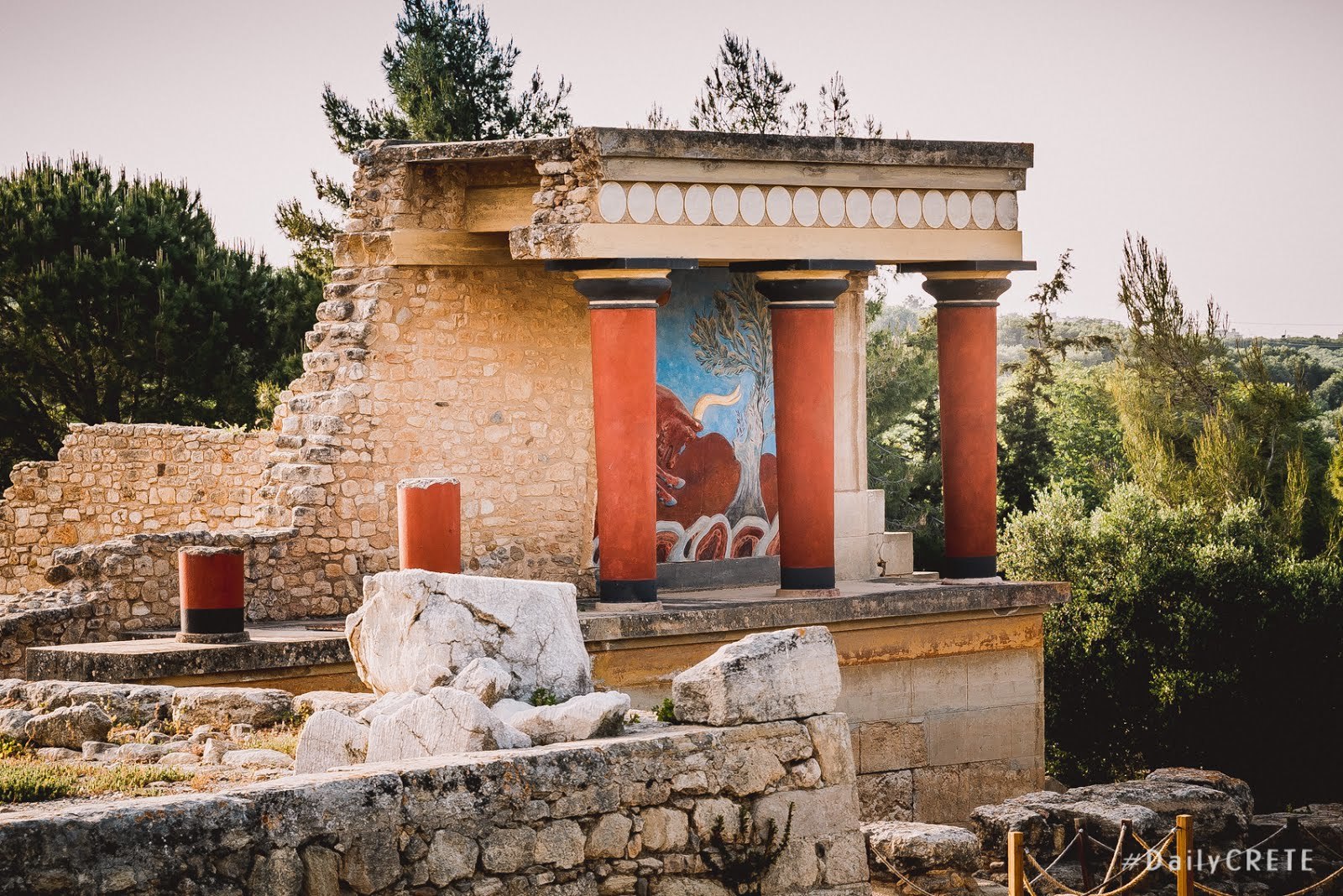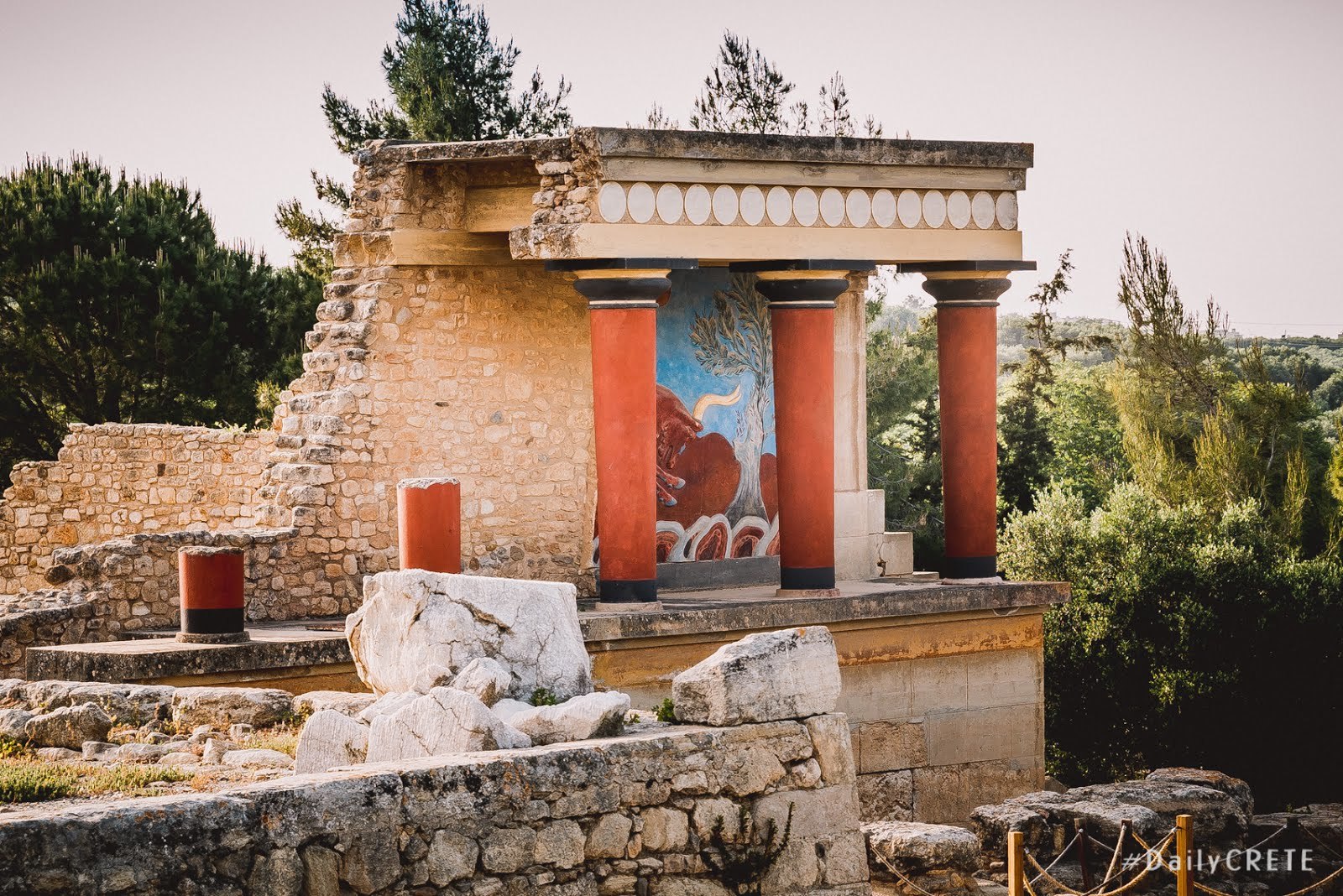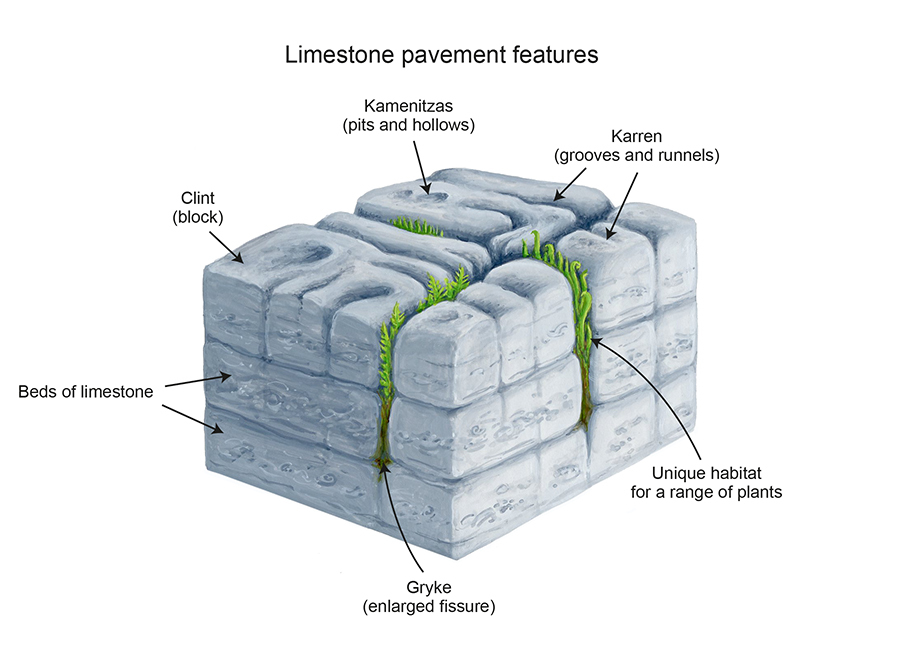Know before you go: Knossos is open from 9 AM to 3 PM from November-March and 8 AM to 7 PM from April-October (8 AM to 3 PM on weekends). The entrance fee is €15 per person.

Κνωσός:
Η Κνωσός είναι η αρχαιότερη πόλη της Ευρώπης και έχει ένα Μινωικό παλάτι. Οι Μινωίτες έκαναν εμπόριο με πολλούς ανθρώπους σε όλη τη Μεσόγειο και χρησιμοποίησαν το νησί της Κρήτης για να εγκαθιδρύσουν τον πολιτισμό τους. Πολλοί θρύλοι όπως ο Μινώταυρος και ο Λαβύρινθος συνδέονται με την Κνωσό και τους Μινωίτες. Η πιο γνωστή οικοδομική πέτρα που χρησιμοποιήθηκε για την κατασκευή της πόλης της Κνωσού είναι ο γύψος.

Τι είναι ο γύψος?
Η Κεντρική Κρήτη περιέχει μερικά από τα μεγαλύτερα κοιτάσματα θειικού ασβεστίου στην Ευρώπη. Το θειικό ασβέστιο, το κύριο ορυκτό στο γύψο, έχει λευκό χρώμα και είναι πολύ ευαίσθητο στη χημική αποσάθρωση. Οι αρχαίοι Μινωίτες κατασκεύασαν την Κνωσό από ομαλά λειασμένο γύψο από την Πλειόκαινο περίοδο. Σήμερα, αυτά τα μπλοκ γύψου έχουν τραχιά υφή, αυλακώσεις και αιχμηρές άκρες. Η όξινη βροχή, ένας τύπος χημικής διάβρωσης, διασπά το πέτρωμα λόγω χημικών αντιδράσεων μεταξύ του οξέος και των ορυκτών του βράχου. Ο γύψος είναι ιδιαίτερα ευαίσθητος στις χημικές διαβρώσεις λόγω της μεγάλης ποσότητας ασβεστίου που έχει, του στοιχείου που συνήθως αντιδρά με την όξινη βροχή. Ο γύψος που υφίσταται χημική διάβρωση, συχνά εμφανίζει παρόμοια χαρακτηριστικά με τον αποσαθρωμένο ασβεστόλιθο, ένα άλλο πέτρωμα πλούσιο σε ασβέστιο. Τόσο ο γύψος όσο και ο ασβεστόλιθος μπορούν να σχηματίσουν αυλακώσεις/μικρές τρύπες στο βράχο (καρστικοί σχηματισμοί) και βαθιές σχισμές στο βράχο (ρήγματα). Παρακάτω ακολουθεί μια εικόνα που τονίζει τα χαρακτηριστικά που μπορεί να έχει τόσο ο γύψος όσο και ο ασβεστόλιθος. Μερικές φορές, τα φυτά μπορούν να αναπτυχθούν σε αυτές τις μικρές ρωγμές, οδηγώντας σε βιολογική διάβρωση, στη διάσπαση των πετρωμάτων μέσω βιολογικών οργανισμών.

**Τα μπλοκ του γύψου βρίσκονται στ' αριστερά της τοποθεσίας "Δεξαμενή Καθαρμών."**
Ερωτήσεις:
1. Να εξετάσετε την εμφάνιση και την υφή των λευκών μπλοκ γύψου στην περιοχή. Περιγράψτε αυτό που βλέπετε.
2. Να εξετάσετε πώς η όξινη βροχή και οι χημική διάβρωση επηρεάζουν την οικοδομική πέτρα. Ποιο είναι το πλάτος των αυλακώσεων/μικρών οπών στο βράχο?
3. Φαίνεται η βιολογική διάβρωση να επηρεάζει την πέτρα? Βλέπετε φυτά ή βρύα να αναπτύσσονται μέσα από σχισμές στο βράχο?
4. Αυτή η εργασία απαιτεί φωτογράφιση. Παρακαλούμε να δώσετε μια φωτογραφία σας, το GPS σας ή ένα προσωπικό σας αντικείμενο που ν' αποδεικνύει ότι έχετε επισκεφτεί αυτή την περιοχή. Παρακαλούμε να το δημοσιεύστε στο σημείωμά σας.
Πηγές:
https://natureinfocus.blog/2017/08/20/eroded-gypsum-at-knossos/
https://dalesrocks.org.uk/ribblesdale/geological-processes/pristine-pavement/
https://www.sciencedirect.com/science/article/abs/pii/0305440388900192

Knossos:
Knossos is the oldest city in Europe and contains a Minoan palace. The Minoans traded with many people across the Mediterranean and used the island of Crete to establish their civilization. Many legends like the Minotaur and the Labyrinth are associated with Knossos and the Minoans. The most famous building stone used to build the city of Knossos is gypsum.

What is Gypsum?
Central Crete contains some of the largest calcium sulphate deposits in Europe. Calcium sulphate, the main mineral in gypsum, is white in color and highly susceptible to chemical weathering. The ancient Minoans constructed Knossos of smoothly polished gypsum from the Pliocene period. Today, these gypsum blocks are full of rough textures, grooves, and sharp edges. Acid rain, a type of chemical weathering, breaks down rock due to chemical reactions between the acid and the minerals in the rock. Gypsum is especially susceptible to chemical weathering due to the large amount of calcium present, the element that usually reacts with acid rain. Gypsum that experiences chemical weathering often exhibits similar features to weathered limestone, another calcium-rich rock. Both gypsum and limestone can form grooves/small holes in rock (karrens) and deep fissures in rock (grykes). Below is an image that highlights the features that both gypsum and limestone can contain. Sometimes, plants can grow in these small cracks, leading to biological weathering and rock breakdown through biological organisms.

Location of this EarthCache: **The gypsum blocks are located to the left of the Lustral Basin.**
Logging Tasks:
- Examine the appearance and texture of the white gypsum blocks at the location. Describe what you see.
- Examine how acid rain and chemical weathering affect the building stone. What is the width of the karrens (grooves/small holes) in the rock?
- Does biological weathering seem to be impacting the stone at this stage of the weathering process? Is there any evidence of plants/moss growing on the rock?
- This is a required photo task. Please provide a photo of yourself, your GPS, or a personal item that proves that you have visited this site. Please post this in your note.
Sources:
https://natureinfocus.blog/2017/08/20/eroded-gypsum-at-knossos/
https://dalesrocks.org.uk/ribblesdale/geological-processes/pristine-pavement/
https://www.sciencedirect.com/science/article/abs/pii/0305440388900192
| We have earned GSA's highest level: |
 |


